
Have you always wanted to try ethnic food in India? It can be difficult to know where to start, especially if you want quality, authentic Indian food.
In this article, we’ll share with you everything you need to know about the cuisine of India. From the top five dishes you must try in a restaurant to the most popular street foods and heavenly Indian desserts, you’ll get a taste of what to expect when dining in India. We’ll even give you a few simple Indian food recipes that you can try at home. 🙂
 Table of Contents
Table of Contents
- Why is it Important to Study Indian Foods?
- Food-Related Vocabulary
- Useful Phrases Related to Food
- Must-Try Dishes in Indian Restaurants
- Unique Indian Foods
- Bonus: Simple Recipes to Make Authentic Indian Food at Home
- How to Get the Most Out of HindiPod101.com
1. Why is it Important to Study Indian Foods?
We all love food. During the course of human history, food has become more than just a means of survival—it has become a source of pleasure and a major component of culture. Just look at the variety of eating styles in different cultures, countries, and regions!
India has always flaunted its love of spices and flavors, and has created all kinds of finger-licking recipes.
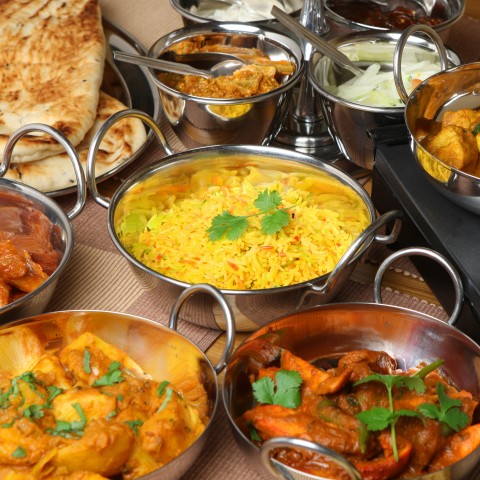
For a non-native, talking about Indian cuisine is a foolproof way to bond with local Indians. And if you’re here as a traveler, you’ll need to know the names of popular food items to make sure you don’t stay hungry!
Once you have a good understanding of the different types of Indian cuisine and a solid vocabulary, mouth-watering desserts, buttery non-veg dishes, and unforgettable savoriness are just a menu away.
2. Food-Related Vocabulary
The best way to begin this guide is by learning as many Indian food names in Hindi as possible.
You can’t get your order right unless you’re familiar with Indian spices and herbs, as well as the names of other ingredients. Some ingredients may be too spicy for non-natives, whereas others may be too sweet.
We’ve categorized several essential items into different tables for you. Review them often to quickly pick up and memorize the new words.
| Table 1 | |
| Spices and Condiments | मसाले (maSaaLe) |
| Salt | नमक (Namak) |
| Black Salt | काला नमक (kaaLaa Namak) |
| Sugar | चीनी (ciiNii) |
| Turmeric | हल्दी (haLDii) |
| Red Chili Powder | लाल मिर्च पाउडर (LaaL mirc paaudar) |
| Coriander Powder | धनिया पाउडर (DHaNiyaa paaudar) |
| Black Pepper | काली मिर्च (kaaLii mirc) |
| Clove | लौंग (Laung) |
| Cardamom | इलायची (iLaayacii) |
| Fennel Seeds | सौंफ़ (Saunf) |
| Cumin Seeds | ज़ीरा (ziiraa) |
| Mustard Seeds | सरसों (SaraSon) / राई (raaii) |
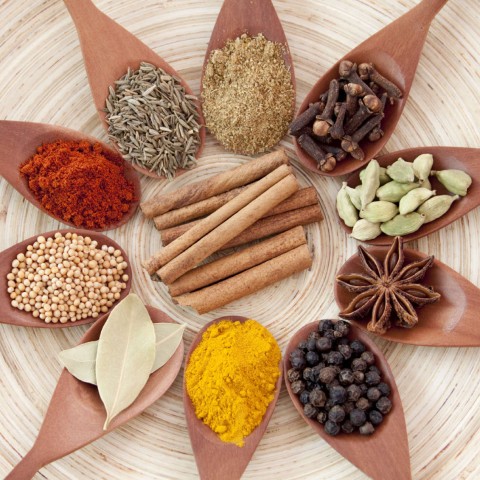
| Table 2 | |
| Vegetables | सब्ज़ी (Sabzii) |
| Potato | आलू (aaLuu) |
| Green Chilis | हरी मिर्च (harii mirc) |
| Bell Pepper | शिमला मिर्च (simaLaa mirc) |
| Ginger | अदरक (aDarak) |
| Garlic | लहसुन (LahaSuN) |
| Onion | प्याज़ (pyaaz) |
| Green Coriander | हरी धनिया (harii DHaNiyaa) |
| Cucumber | खीरा (khiiraa) |
| Brinjal / Eggplants | बैंगन (baingaN) |
| Cabbage | पत्ता गोभी (paTTaa gobhii) |
| Cauliflower | फूलगोभी (phuuL gobhii) |
| Spinach | पालक (paaLak) |
| Carrots | गाजर (gaajar) |
| Table 3 | |
| Fruits | फल (phaL) |
| Apple | सेब (Seb) |
| Orange | संतरा (SanTaraa) |
| Banana | केला (keLaa) |
| Grapes | अंगूर (anguur) |
| Watermelon | तरबूज़ (Tarabuuz) |
| Melon | ख़रबूज़ा (kharabuuzaa) |
| Lemon | नींबू (Niimbuu) |
| Guava | अमरूद (amaruuD) |
| Pineapple | अनानास (aNaaNaaS) |
| Pomegranate | अनार (aNaar) |
| Mango | आम (aam) |
| Tomato | टमाटर (tamaatar) |
| Bottle Gourd | लौकी (Laukii) / घीया (ghiiyaa) |
| Pumpkin | कद्दू (kaDDuu) |
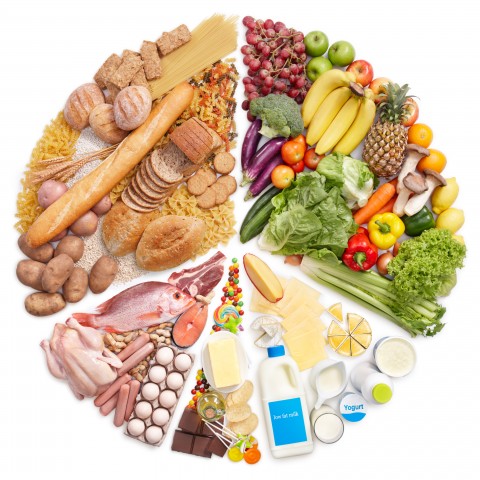
| Table 4 | |
| Dairy Items | दुग्ध उत्पाद (DugDH uTpaaD) |
| Milk | दूध (DuuDH) |
| Curd | दही (Dahii) |
| Buttermilk | छाछ (chaach) |
| Butter | मक्खन (makkhaN) |
| Clarified Butter | घी (ghii) |
| Cottage Cheese | पनीर (paNiir) |
| Table 5 | |
| Staple Foods | प्रमुख भोजन (pramukh bhojaN) |
| Rice | चावल (caavaL) |
| Wheat | गेहूँ (gehuun) |
| Wheat Flour | आटा (aataa) |
| Millets | बाजरा (baajaraa) |
| Lentils | दाल (DaaL) |
| Kidney Beans | राजमा (raajamaa) |
| Black Gram | उड़द दाल (udaD DaaL) |
| Bengal Gram | चना दाल (caNaa DaaL) |
| Table 6 | |
| Non-Vegetarian Items | मांसाहारी भोजन (maanSaahaarii bhojaN) |
| Eggs | अंडे (ande) |
| Fish | मछली (machaLii) |
| Chicken | चिकन (cikaN) / मुर्गा (murgaa) |
| Prawns | झींगा मछली (jhiingaa macaLii) |
| Mutton | बकरी का गोश्त (bakarii kaa goshT) |
| Crabs | केकड़ा (kekadaa) |
* “Vegetarian food” is known as शाकाहारी भोजन (saakaahaarii bhojaN) in Hindi.
* There’s also a special type of food that contains no garlic, onion, potato, or non-veg items. It’s called “Jain Food” = जैन भोजन (jaiN bhojaN). There are many restaurants which serve only Jain food.
| Table 7 | |
| Other Essential Words | अन्य उपयोगी शब्द(aNya upayogii sabD) |
| Water | पानी (paaNii) |
| Tea | चाय (caay) |
| Coffee | कॉफ़ी (kaufii) |
| Lemonade | नींबू पानी (Niimbuu paaNii) |
| Dry Vegetable/ Stir-fry | सूखी सब्ज़ी (Suukhii Sabzii) |
| Curry | शोरबा (sorbaa) / करी (karii) |
| Salad | सलाद (SaLaaD) |
| Hot and Spicy | तीखा (Tiikhaa) |
| Dessert / Sweets | मीठा (miithaa) / मिठाई (mithaaii) |
| Table 8 | |
| Flavors and Tastes | स्वाद (SvaaD) |
| Sweet | मीठा (miithaa) |
| Sour | खट्टा (khattaa) |
| Salty | नमकीन (NamakiiN) |
| Spicy | चटपटा (catapataa) |
| Hot (Spicy) | तीखा (Tiikhaa) |
| Cold | ठंडा (thandaa) |
| Hot | गर्म (garm) |
| Bland | फीका (phiikaa) |
| Boiled | उबला (ubaLaa) |
| Raw | कच्चा (kaccaa) |
| Cooked | पका हुआ (pakaa huaa) |
| Table 9 | |
| Utensils and Tableware | बर्तनों के नाम (barTaNon ke Naam) |
| Spoon | चम्मच (cammac) |
| Fork | काँटा (kaantaa) |
| Glass | गिलास (giLaaS) |
| Plate | थाली (THaaLii) |
| Bowl | कटोरी (katorii) |
| Cup | प्याला (pyaaLaa) |
| Knife | चाकू (caakuu) |
| Pitcher | जग (jag) |
| Ladle | कलछी (kaLachii) |
Don’t forget to visit our complete list of tableware in Hindi to learn even more practical words!
| Table 10 | |
| Breakfast | सुबह का नाश्ता (Subah kaa NaasTaa) |
| Lunch | दोपहर का खाना (Dopahar kaa khaaNaa) |
| Dinner | रात का खाना (raaT kaa khaaNaa) रात्रिभोज (raaTribhoj) |
| Snack | नाश्ता (NaasTaa) / अल्पाहार (aLpaahaar) |
3. Useful Phrases Related to Food
Great! You’ve already made yourself familiar with the common vocabulary related to food items. Now, it’s time to learn the most useful phrases for different scenarios, such as ordering food.

1 – Phrases for Ordering Food
Let’s begin with the phrases you might find useful when placing an order at a restaurant.
- खाने में क्या मिलेगा? (khaaNe men kyaa miLegaa?) / मेन्यू में क्या है? (meNyuu men kyaa hai?)
“What’s on the menu?”
- क्या यहाँ शाकाहारी भोजन मिलेगा? (kyaa yahaan saakaahaarii bhojaN miLegaa?)
“Do you serve vegetarian food here?”
- क्या यहाँ मांसाहारी भोजन मिलेगा? (kyaa yahaan maanSaahaarii bhojaN miLegaa?)
“Do you serve non-vegetarian food here?”
- मुझे एक गिलास ठंडा पानी चाहिए। (mujhe ek giLaaS thandaa paaNii caahiye.)
“I need a glass of water.”
- मुझे कम-मिर्च का / कम तीखा भोजन चाहिए। (mujhe kam-mirc kaa/ kam Tiikhaa bhojaN caahiye.)
“I want something less spicy.”
- मुझे दो रोटी, दाल, आलू की सूखी सब्ज़ी, दही, और सलाद चाहिए। (mujhe Do rotii, DaaL, aaLuu kii Suukhii Sabzii, Dahii, aur SaLaaD caahiye.)
“I want two chapatis, a bowl of lentils, dry potato curry, curd, and salad.”
- एक आइसक्रीम ले आइये। (ek aaiSakriim Le aaiye.)
“Please get me an ice cream.”
- क्या आप बिल ले आएंगे? (kyaa aap biL Le aayenge?)
“Could you bring the bill, please?”
2 – How to Describe a Food Item
Isn’t it wonderful how our taste buds respond so quickly to anything we eat? Suppose you wanted to talk about the flavor of something you just ate; how would you do that? Let’s look at some example phrases for expressing the flavor of whatever we’re having.
- यह बहुत तीखा है। (yah bahuT Tiikhaa hai.)
“It’s really hot and spicy.”
- इस सब्ज़ी में नमक कम है। (iS Sabzii men Namak kam hai.)
“This curry could use more salt.”
- मुझे एक गर्म चाय का प्याला चाहिए। (mujhe ek garm caay kaa pyaaLaa caahiye.)
“I want a hot cup of tea.”
- यह फलों का रस बिल्कुल ताज़ा है। (yah phaLon kaa raS biLkuL Taazaa hai.)
“This fruit juice is so fresh.”
- खाना बहुत स्वादिष्ट है। (khaaNaa bahuT SvaaDist hai.)
“The food is delicious.”
3 – Phrases for When You’re Learning to Cook Indian Food
They say that those who love to eat also love to cook. Cooking is an art; it’s an expression of love served in the form of a fresh, hot meal. Of course, the foodie in all of us wants not only to relish a cuisine, but also to manifest our love of food through cooking.

By the time you’re done reading this guide, you’ll want to try your hand at some of these wonderful Indian cuisine dishes. God forbid you get stuck in the middle of a cooking battle! Feel free to use the Hindi phrases below to get going with your super chef skills.
- इस सब्ज़ी को बनाने का क्या तरीक़ा है? (iS Sabzii ko baNaaNe kaa kyaa Tariiqaa hai.)
“What’s the recipe for this curry?”
- यह सलाद कैसे बनायें? (yah SaLaaD kaiSe baNaayen.)
“How do you make this salad?”
- क्या दाल पक गयी है? (kyaa DaaL pak gayii hai.)
“Are the lentils cooked?”
- मुझे रोटी बनाना सीखना है। (mujhe rotii baNaaNaa SiikhaNaa hai.)
“I want to learn how to make chapatis.”
4. Must-Try Dishes in Indian Restaurants
Now for the part you’ve been waiting for! We’re about to walk you through the must-try dishes served in Indian restaurants.
1 – Lentils = दाल (DaaL)
Let’s just say that we Indians love lentils. An authentic Indian Thali is never complete without a bowl of दाल (DaaL). The two most popular varieties are:
- अरहर की दाल (arahar kii DaaL) / पीली दाल (piiLii DaaL)
- काली दाल (kaaLii DaaL)
These lentils are first washed and then pressure cooked in salted water until soft. The water contains a bit of turmeric and a pinch of chili powder for extra flavor and color.
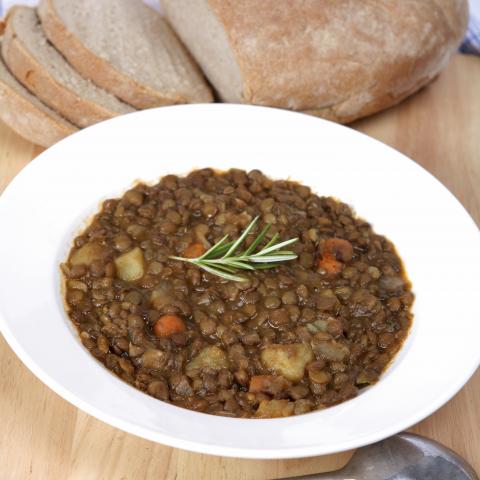
When looking at an Indian cuisine menu, you may find options like “Dal Fry” or “Dal Tadka” and “Plain Dal.” The Plain Dal is the safest option if you’re not into spicy foods, whereas Dal Tadka actually comes with “tempering.”
Tempering can be done with clarified butter and cumin seeds. The spicier “Tadka” consists of onions, chopped garlic cloves, dry red chilis, and cumin seeds all fried in ghee/clarified butter.
We recommend this dish because it’s an Indian version of comfort food. It’s hot like soup, a great source of protein, and quite filling—all while being low on the spicy meter.
2 – Different Types of Flatbreads
Flatbreads have different names in Hindi depending on how they’re made and what ingredients are used in them:
- रोटी (rotii) / फुलका (phuLakaa) / चपाती (capaaTii)
The first and most common wheat “flatbread” is called रोटी (rotii) / फुलका (phuLakaa) / चपाती (capaaTii). The flour dough is flattened into a round shape with a rolling pin, heated on the tavaa, and then heated directly on the flame for a while.
रोटी (rotii) is quite soft. It’s commonly served with clarified butter or salted butter spread over it. However, those who don’t like it that way may skip the butter.
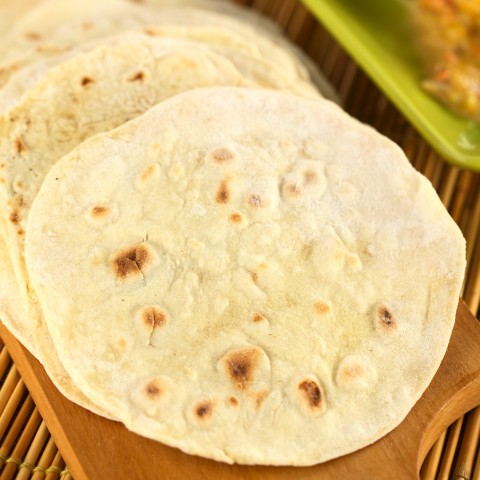
- Naan – नान (NaaN)
Naan is made with refined flour. It’s so soft and delicious that you just can’t stop at one! Nonetheless, it’s heavy on the stomach; one or two Naan is enough to satisfy one’s hunger.
Naan has become quite popular due to its variety of flavor options. For instance, you can get butter Naan, garlic Naan, and so on.
- Tandoori Roti – तंदूरी रोटी (TanDuurii rotii)
The name Tandoori Roti comes from the way it’s cooked: directly on the flames of a tandoor. A tandoor uses a traditional way of baking with hot charcoals. The Tandoori Roti is crispy and is best eaten with curry or dipped in hot dal.
- Rumali Roti – रुमाली रोटी (rumaaLii rotii)
This kind of flatbread is made with refined flour, rolled as thinly as possible, and then tossed in the air using the fingertips to increase its size. Rumali Roti is one of a kind and you should definitely try it!
- Missi Roti – मिस्सी रोटी (miSSii rotii)
Missi Roti is made with gram flour. It’s a bit crispy, filled with protein, and quite healthy for your gut. You can always have a bite with some curry or stir-fry.
- Paratha – परांठा (paraanthaa)
Now, there is plain paratha and then there’s stuffed paratha. And believe me, when comparing their flavors and pleasure to the taste buds, there’s a difference as stark as day and night.
Plain paratha is just like chapati, except it’s thinly layered with oil or ghee. Stuffed paratha is made in the same way, but it bursts with the flavors of whatever the inside stuffing is. Indians usually love parathas stuffed with mashed potatoes, grated cauliflower, grated radish, and onions.
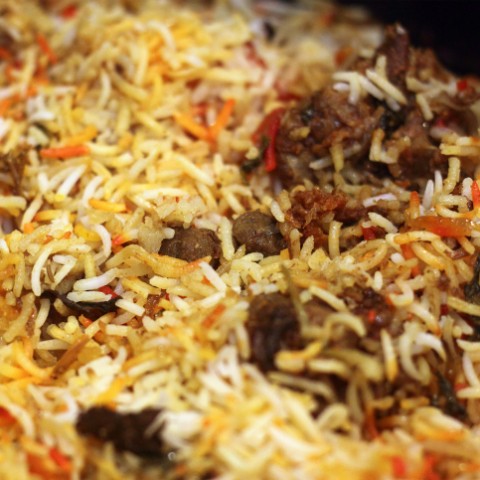
3 – Rice Dishes
When it comes to rice, we have quite a long list of Indian foods to review. For instance, you could feast on simple steamed rice mixed with daal. You could also get jeera rice (cumin rice), pulav, or biryani.
The biryani is a complete meal in itself, actually. There are two versions: veg biryani and non-veg biryani. The rice is soaked, cooked, and mixed with deep-fried whole spices, such as cardamom, saffron, cashew nuts, and cloves.
Veg biryani contains a variety of chopped vegetables, whereas the non-veg kind may have chicken pieces or other types of meat in it.
4 – South Indian Recipes
South Indian cuisine is a popular choice among many Indians and foreigners. It’s low on spices and low on oil. That’s what makes it so superb! Adding to that, you can have it for breakfast, lunch, brunch, or dinner. It can make a proper meal or just a snack.
South Indian food items such as Dosa, Idli-Sambhar, Rasam, and Uttapam are usually made with ground and steamed paste of white Urad lentil and rice. It’s best served with hot Sambhar and cool coconut chutney!
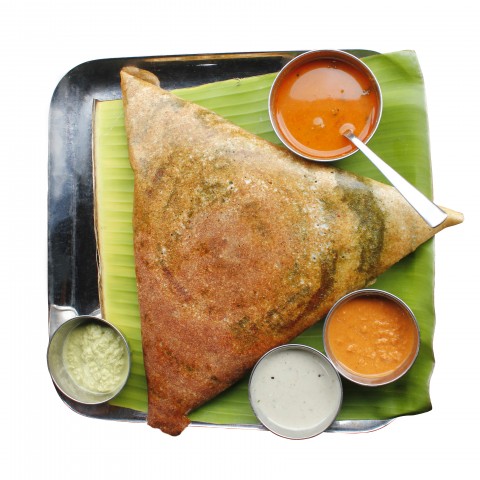
5 – Cottage Cheese Recipes
There are countless cheese varieties around the world. Of them all, Indians prefer fresh cottage cheese. Our love for cottage cheese, whether it be homemade or store-bought, cannot be compared to anything! Glance through any Indian menu and you’ll find “cottage cheese” or पनीर (paNiir) dishes as snacks, main courses, and starters.
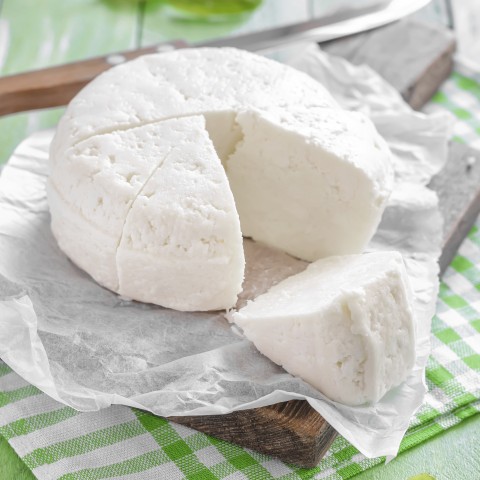
We whole-heartedly recommend these menu items:
- पालक पनीर (paaLak paNiir) = “Spinach and cottage cheese curry”
- पनीर टिक्का (paNiir tikkaa) = “Skewed cheese and veggies”
- पनीर बटर मसाला (paNiir batar maSaaLaa) = “Spicy butter cheese curry”
- कढ़ाई पनीर (kadhaai paNiir) = “Cauldron cheese”
- पनीर चिली (paNiir ciLii) = “Cheese chili”
- मटर पनीर (matar paNiir) = “Cheese with green peas curry”
6 – Chicken Recipes
To cut this section short, all of the cottage cheese dishes we just mentioned have equivalent chicken dishes. Here are just a few popular chicken dishes you can expect to find in India:
- “chili chicken”
- “chicken butter masala”
- “mughlai chicken”
- “chicken rogan josh”
- “tawa chicken”
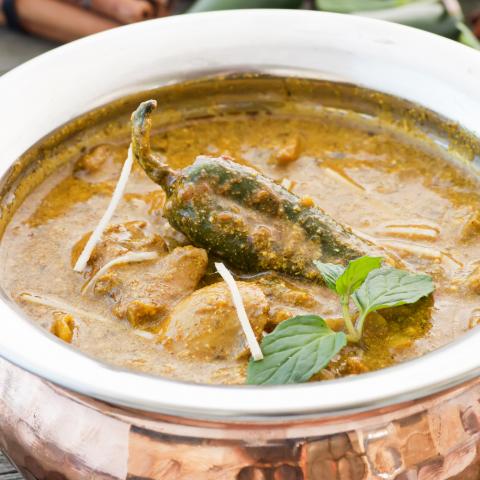
7 – Potatoes and Other Veggies
Don’t even get me started on the veggie list. Did you know that Indian meals never lack vegetables? Vegetarian Indian food is far more popular in India than meat-based foods are. Whether it be a succulent gravy-filled dish or a dry curry, we must have some vegetables in our thaali.
When you’re in a restaurant, order at your own risk when you get confused about which curries to eat and which to skip. Just kidding. 😉 We’re here to help you narrow down the best Indian foods so you can gorge on fresh main course vegetables.
These curries never go out of fashion:
- आलू मटर (aaLuu matar) = “Potato and peas dry curry”
- गोभी मसाला (gobhii maSaaLaa) = “Spicy cauliflower”
- मटर मशरूम (matar masaruum) = “Peas and mushroom stir fry”
- मशरूम मसाला (masaruum maSaaLaa) = “Spicy mushroom curry”
- मिक्स वेज (mikS vej) = “Mix veg”
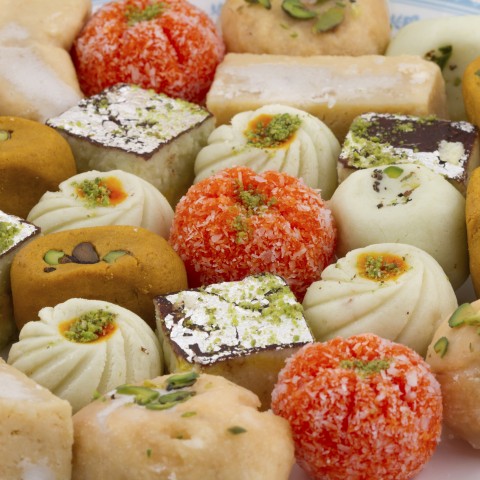
5. Unique Indian Foods
This section is the most interesting of all, because we’re going to quickly explore a set of unique Indian cuisine essentials which are only popular in India. So, let’s dig in!
1 – Raita = रायता (raayaTaa)
Raita is blended curd mixed with particular spices, such as roasted and ground cumin seeds, black salt, sea salt, a pinch of chili powder, and mint leaves. The most popular type is the cucumber raita, to which peeled and grated cucumber is added to the spiced curd.
Raita is a healthy Indian food and a tasty way to cool off during the summer heat. It also helps with digestion and increases healthy gut bacteria.
2 – Buttermilk = छाछ (chaach)
When cream is blended for a long time, it separates into butter and buttermilk. The latter is another unique Indian beverage, especially loved in Northern India.
Usually, people prefer a glassful of plain buttermilk with some salt added. Another way is to temper the buttermilk with asafoetida, cumin seeds, and chili powder, and to add a few mint leaves to it.
3 – Lassi = लस्सी (LaSSii)
This is a sweet beverage. Curd is cooled and blended by adding some water and ice. Add some sugar or rose syrup, crushed almonds, and cashew nuts, and enjoy!
4 – Shikanji = शिकंजी (sikanjii) or नींबू पानी (Niimbuu paaNii)
You can always count on this drink during the summer! It’s the most widespread homemade drink, and you can also find it sold in street stalls during May and June.
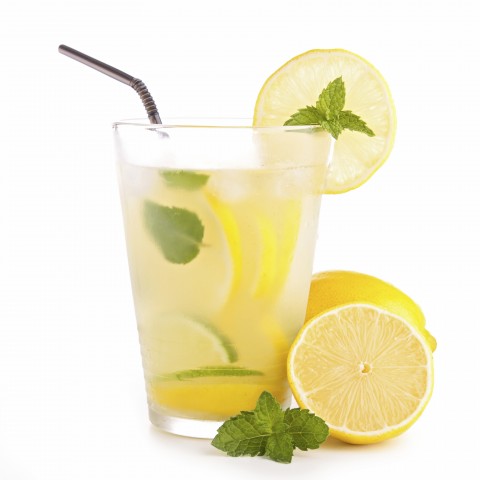
नींबू पानी (Niimbuu paaNii), or “lemonade,” can be made either sweet or salted. Add some sugar, squeeze a lemon, and drop some ice cubes into chilled water. Mix until the sugar dissolves and your sweet lemonade version, called शिकंजी (sikanjii), is ready.
For the salted version, all you have to do is replace the sugar with salt and add some mint leaves for that refreshing feeling.
5 – Street Foods
Oh, the list is never-ending. We Indians are so much into spicy Indian street foods that it’s impossible to cover all of them. But just for you, we’ll name some of the most superb and unforgettable Indian street foods.
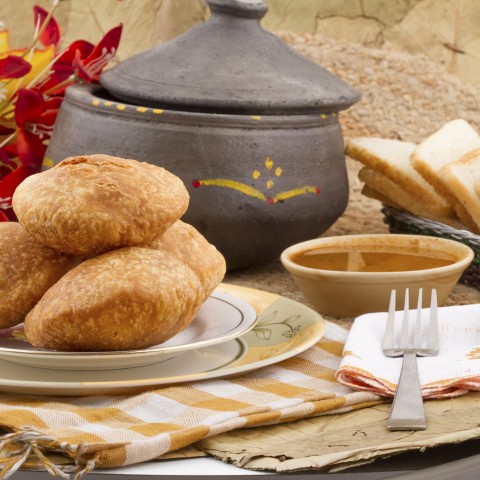
They include:
- पाव भाजी (paav bhaajii) = “Bread and spicy curry”
- समोसा (SamoSaa) = “Samosa”
- कचौड़ी (kacaudii) = “Kachori”
- चाट (caat) = “Chaat”
- छोले भटूरे (choLe bhatuure) = “Chole bhature”
- आलू पूरी (aaLuu puurii) = “Aloo poori”
- पानी पूरी (paaNii puurii) / गोलगप्पे (goLagappe) / पुचका (puchaka) = “Panipuri” / “Golgappe” / “Puchka”
6. Bonus: Simple Recipes to Make Authentic Indian Food at Home
As we promised you at the beginning of this article, here comes the section that you’ve long been waiting for! Enjoy a handful of quick Indian cuisine recipes that are not only authentic but also delicious. Flaunt your cooking skills and impress the natives by serving them these all-time favorite local Indian dishes.
1 – “Yellow Lentils” (Pigeon Pea) / Arhar Dal = अरहर दाल (arahar DaaL)
Wash the yellow lentils and place them in a pressure cooker. Add some water, salt, a teaspoon of turmeric powder, and a dash of chili powder.
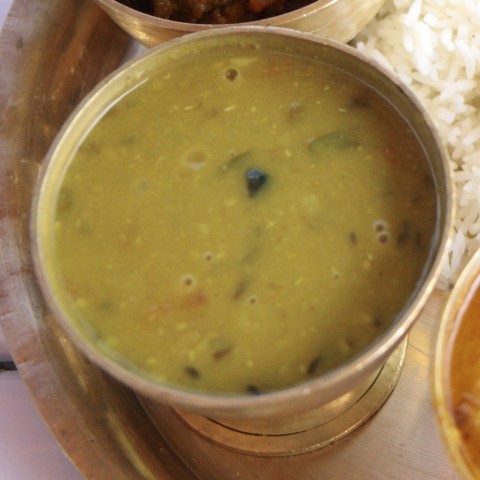
Pressure cook on high heat until you hear a whistle. Then, turn it down and let it whistle two more times to simmer. When the Arhar Dal is cooked nicely, heat some clarified butter in a medium-sized ladle, add some cumin seeds, asafoetida, and chili powder, and mix it in the cooked DaL.
2 – “Coriander Chutney” / Dhaniya Chatni = धनिया चटनी (DHaNiyaa cataNii)
This is the easiest one!
To a blender, add a bunch of fresh green coriander leaves, a few mint leaves, salt to taste, cumin seeds, 2-3 green chilis (if you want it spicy), and blend it all together. If it looks dry, add some water to make a fine paste. Serve it fresh with any snacks or full meals.
3 – Cucumber Raita / Kheere ka Raita = खीरे का रायता (khiire kaa raayaTaa)
Wash, peel, and grate some fresh cucumbers. In a bowl, take a good amount of curd and blend it with a spoon. Add the grated cucumber, sea salt, black salt, chili powder, chopped coriander leaves, chopped mint leaves, and…voila! You’re done! The cucumber raita is ready. Best served when chilled, so remember to refrigerate it for a few hours.
4 – Rice Pudding / Kheer = खीर (khiir)
Wash and soak some rice. Drain it and put it aside. In another heavy-bottomed saucepan, pour a good amount of milk and bring it to a boil. Keep stirring so it doesn’t stick to the pan. When the milk amount is reduced, add the rice and let it cook. Don’t forget to stir once in a while.
When the rice looks soft and the mixture has become thick, add sugar to taste. Cook a little longer and then turn off the heat. Top it with chopped nuts (like almonds or cashews), shredded dried coconut, and raisins.
You can either serve it hot or put it in the fridge for a few hours until it’s chilled.
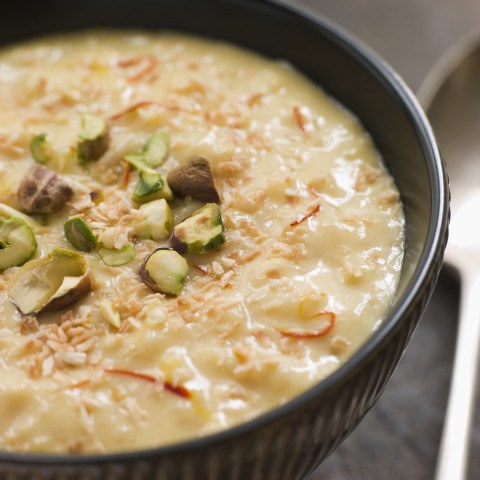
7. How to Get the Most Out of HindiPod101.com
And sadly, we’ve come to the end of this article. I’m sure you must have enjoyed this lesson on Indian food recipes! Which Indian dishes are your favorite so far? Are you willing to try any of these recipes (if you haven’t yet)? Let us know in the comments!
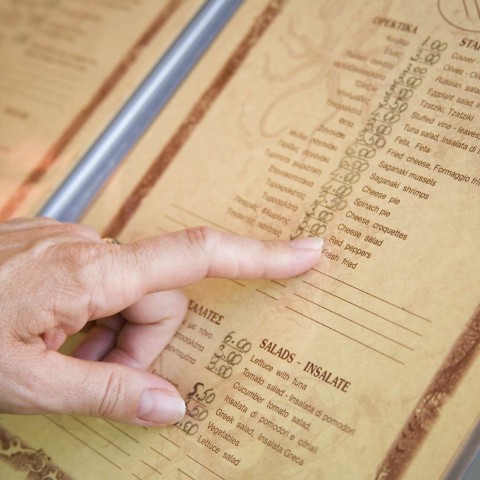
Sign up for a free lifetime account at HindiPod101.com to explore our vast number of Hindi learning resources. Our Hindi lesson library and free Hindi vocabulary lists are waiting for you!
If you have a busy or unpredictable schedule, catch up with us on the go. How? With our easy-to-download mobile application.
Have questions about a lesson you just went over? If you have a Premium PLUS account, you can also use our “MyTeacher” messenger to have your questions answered and doubts dispelled by a native Hindi speaker.
Happy learning!










